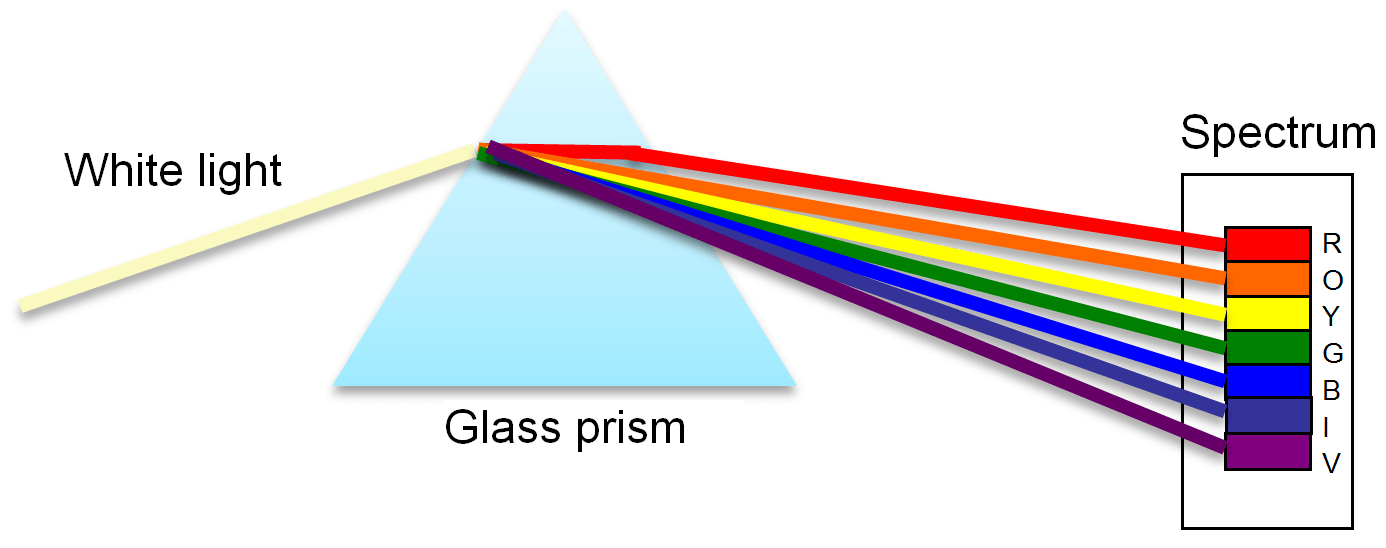
Which Colour of light has the highest speed?
Answer
219k+ views
Hint: Before starting this question, we should know about the “Dispersion of light”. Dispersion is the term used to describe the breaking of visible light into its individual colours. The alteration of the light ray's speed, which creates a different angle of departure for each wavelength, is what causes dispersion of light.
Complete answer:
Splitting of white light

Seven of the colour ranges that make up white light are not visible in a distinct pattern. Dispersion is the term used to describe the division of white light into its individual colours. The seven colours of the rainbow may not always be visible. It is a result of colour overlapping. All seven of the colours that make up white light are divided apart by the degree of bending of the light's path, which is determined by the angle the incident beam of light makes with the surface and the difference in the refractive indices of the two media (Snell's law).
White light can be used to create the band of seven colours by employing a narrow light beam, glass prism, and lens configuration. It is known as the spectrum. Spectrums come in a variety of forms.
The speed of different colours of light varies. When light travels through a prism, it bends the light in diverse ways, causing it to spread out rather than combine. Red goes the fastest, so it is on top, and violet travels the slowest, so it is at the bottom.
Note:It is not required for the light source to always be white in order to obtain a spectrum. A band of three to four colours is also produced by composite light, which has a range of three to four colours. Black (or dark) denotes the absence of light rays, while white light is composed of the seven visible colours (VIBGYOR).
Complete answer:
Splitting of white light

Seven of the colour ranges that make up white light are not visible in a distinct pattern. Dispersion is the term used to describe the division of white light into its individual colours. The seven colours of the rainbow may not always be visible. It is a result of colour overlapping. All seven of the colours that make up white light are divided apart by the degree of bending of the light's path, which is determined by the angle the incident beam of light makes with the surface and the difference in the refractive indices of the two media (Snell's law).
White light can be used to create the band of seven colours by employing a narrow light beam, glass prism, and lens configuration. It is known as the spectrum. Spectrums come in a variety of forms.
The speed of different colours of light varies. When light travels through a prism, it bends the light in diverse ways, causing it to spread out rather than combine. Red goes the fastest, so it is on top, and violet travels the slowest, so it is at the bottom.
Note:It is not required for the light source to always be white in order to obtain a spectrum. A band of three to four colours is also produced by composite light, which has a range of three to four colours. Black (or dark) denotes the absence of light rays, while white light is composed of the seven visible colours (VIBGYOR).
Recently Updated Pages
A square frame of side 10 cm and a long straight wire class 12 physics JEE_Main

The work done in slowly moving an electron of charge class 12 physics JEE_Main

Two identical charged spheres suspended from a common class 12 physics JEE_Main

According to Bohrs theory the timeaveraged magnetic class 12 physics JEE_Main

ill in the blanks Pure tungsten has A Low resistivity class 12 physics JEE_Main

The value of the resistor RS needed in the DC voltage class 12 physics JEE_Main

Trending doubts
JEE Main 2026: Application Form Open, Exam Dates, Syllabus, Eligibility & Question Papers

Understanding Uniform Acceleration in Physics

Derivation of Equation of Trajectory Explained for Students

Hybridisation in Chemistry – Concept, Types & Applications

Understanding the Angle of Deviation in a Prism

Understanding Collisions: Types and Examples for Students

Other Pages
JEE Advanced Marks vs Ranks 2025: Understanding Category-wise Qualifying Marks and Previous Year Cut-offs

Understanding Atomic Structure for Beginners

How to Convert a Galvanometer into an Ammeter or Voltmeter

Understanding Centrifugal Force in Physics

JEE Main Marking Scheme 2026- Paper-Wise Marks Distribution and Negative Marking Details

Degree of Dissociation: Meaning, Formula, Calculation & Uses




